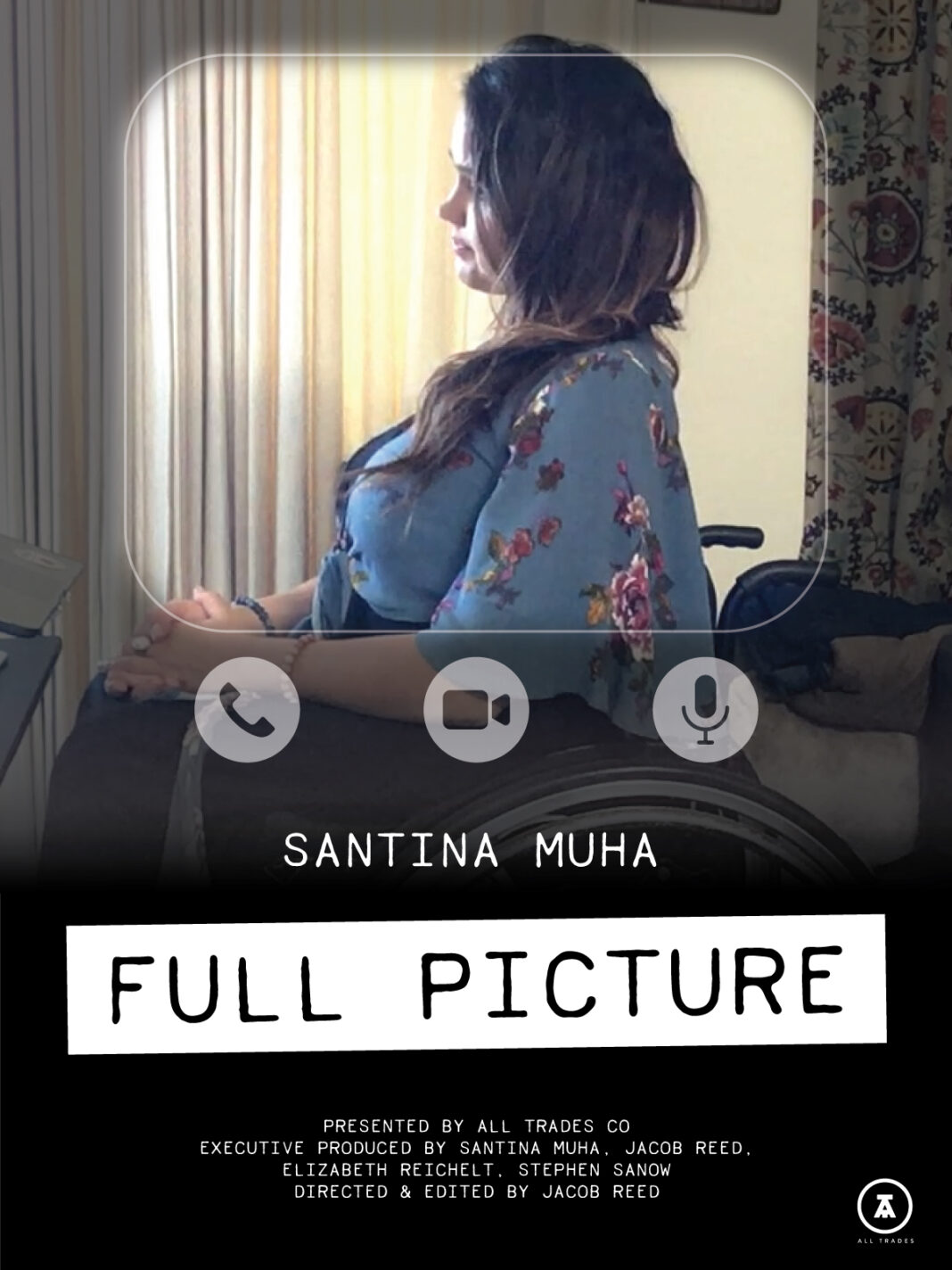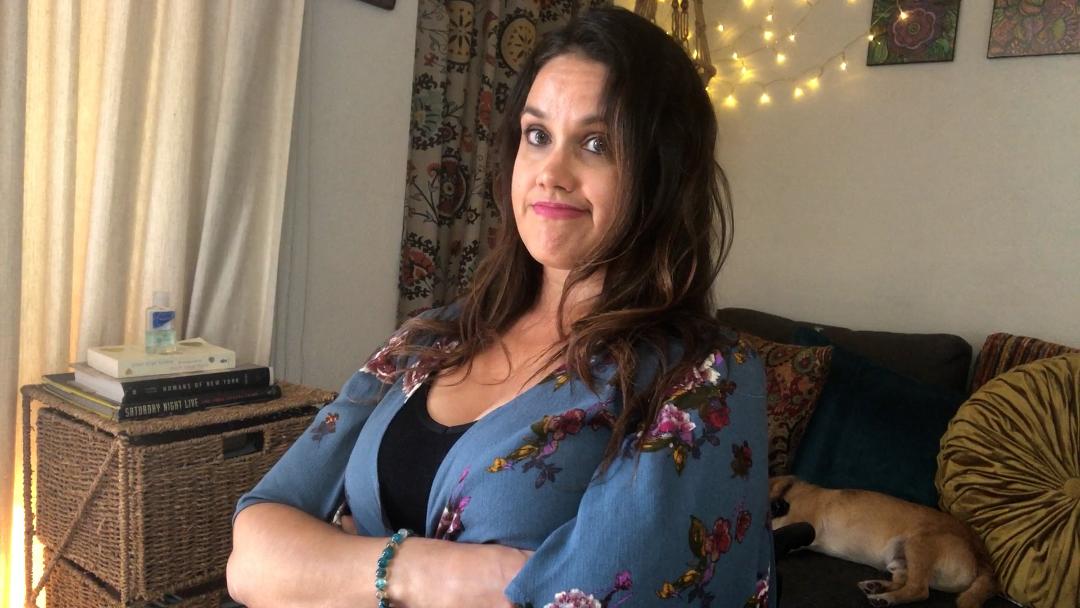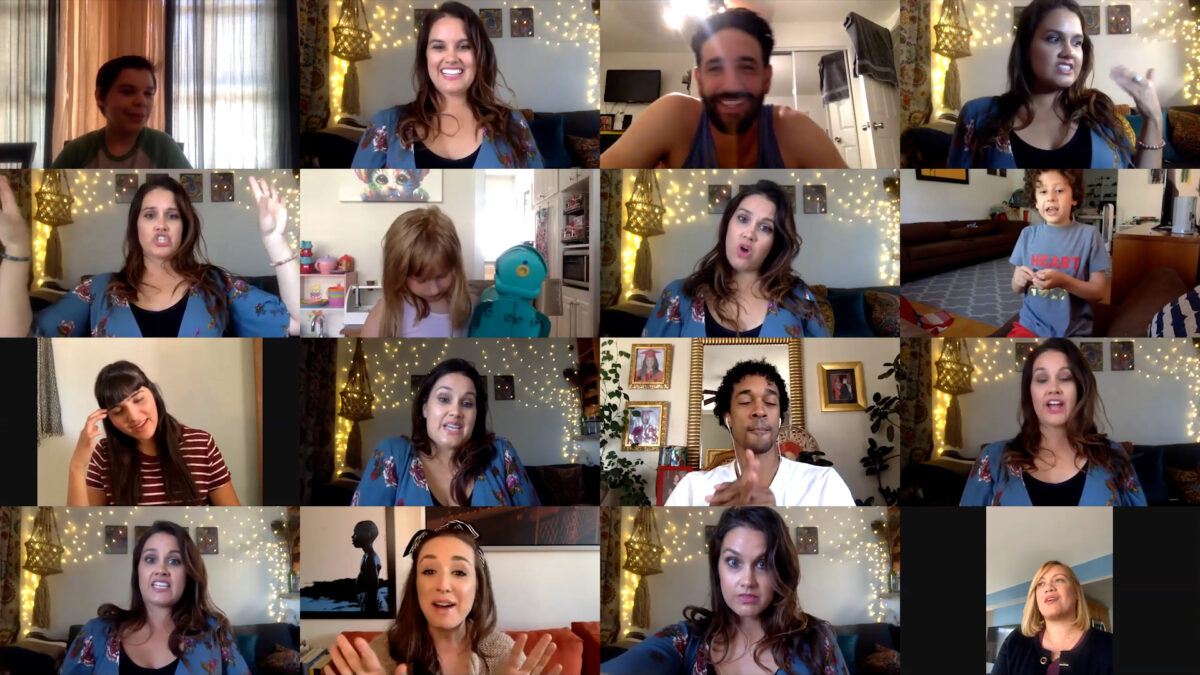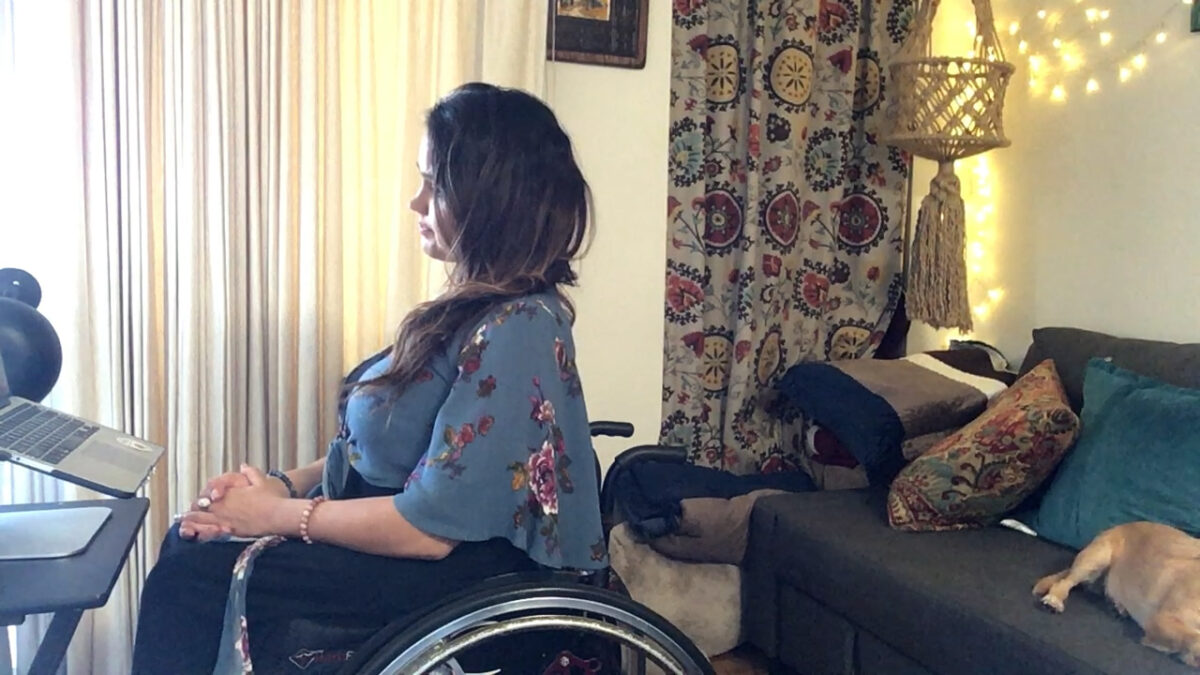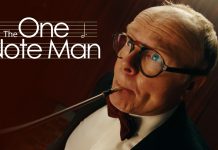The recent Oscar win of CODA did much to highlight the key issues that affect families with deaf individuals.
In the new short factual documentary, FULL PICTURE, Santina Muha and Jacob Reed attempt to highlight the key issues of disability when Santina focuses on how she will be perceived on Zoom through whether or not she discloses her confinement to a wheelchair due to a life-changing accident when younger.
Film And TV Now had the pleasure of speaking with them both about the film and the issues it attempts to open up the world to:
FILM AND TV NOW: The end credits tell us that the film was shot in five days for the Easterseals Disability Film Challenge: Home Edition. Tell us about this initiative and how it has helped people to develop and evolve as creatives?
SANTINA MUHA: One of the great things about making something for the Film Challenge is that having a deadline really helps you finish something. Sometimes you have a great idea and it just lives in your head or your notebook or your computer and nobody gets to see it. So, having the deadline of the Film Challenge forced us to finish our idea and didn’t give us time to doubt ourselves.
JACOB REED: We came up with the idea, shot and edited it in five days and the final product was a shorter, rougher version of Full Picture that was nominated for Best Picture at Easterseals. About a month after we went through our footage and created the final 12 minute short that has been playing at festivals.
FTVN: The short focuses on the issue of ableism and perception of personality. What were the big takeaways from the people interviewed in the short?
JR: Well, one huge takeaway is that Santina can talk to anyone about anything and be very likeable. But, we kind of already knew that.
SM: I suspected that the children wouldn’t be affected by the reveal and that was confirmed.
JR: Yeah, that really reinforced that so many of our biases are learned behavior.
SM: I was afraid that once we revealed the wheelchair it would become the focus of the conversation and that definitely happened with a few of our interviewees. It opened my eyes a bit that it was a bigger deal for men vs women. So that was a takeaway for me.
FTVN: One thing that does come up in how disabled people can be perceived through film and TV and the sort of roles that can be celebrated because of it. What roles would you like to see more of in the media?
SM: Anything where their whole character doesn’t just revolve around their disability. I would like to see people with disabilities play the lead in a rom-com. I would like to see more parents with disabilities. More bosses and people with authority. I’d like to see more boyfriends and girlfriends – people with disabilities date people without disabilities in the real world. I want to see that on TV.
JR: I think the depictions of disability in front of the camera also reflect the realities behind the camera. In my experience, people with disabilities are barely represented behind the scenes, in the writers room, in the crew – a lot of sets aren’t even accessible. There’s a lot of room for improvement.
FTVN: Santina, you recently co-hosted a panel, Disability in Comedy, with Amy Poehler. Tell us about the panel overview and how did it help change perceptions and thought processes on what could be done and highlighted?
SM: I think it reminded people that there’s not just one type of disability. We had so many different people represented on the panel. It’s important to show there’s diversity among the disability community and we all want to feel represented.
Also, it’s so important to realize there’s a lot of comedy to be mined from the disability community. Too often projects that focus on disability are dramatic or sad, and we’re missing great comedic opportunities.
JR: As an audience member that panel really underscored for me the amount of comedy that’s being totally missed because we’re ignoring the lived experience and observations of a huge group of people.
FTVN: Jacob, you have been a successful award-winning director within the comedy circuit. At present, there are major concerns about what people can say because of the woke movement and evident cancel culture. Where do you feel a balance can be struck over the essence of humour and freedom of speech?
JR: I think audiences are thinking critically about content and holding people accountable for reinforcing harmful stereotypes in a way that hasn’t really happened before and overall that’s encouraging.
Comedians should have freedom of speech, but audiences and platforms also have the freedom to support that comedian’s point of view or not. I think the way to find the balance is to punch up, not down. Making fun of a group that has been historically marginalized, to me, isn’t funny. It’s bullying.
It’s also kind of tired and boring. Comedy has a unique ability to tackle real issues and inequities in a way that disarms audiences, and that’s so much more interesting to me.
FTVN: Santina, what stories would you like to tell in the future that celebrate disability?
SM: Again, I’d like to just show more authentic stories that go beyond the disability. You know, that focus more on other aspects of the person’s life who just so happens to also have a disability.
Well, and also I’d like to see stories that celebrate people who have disabilities and have helped move the needle for representation and advocacy. Like, Crip Camp, is a great example and it also was nominated for an Oscar so what does that tell you? It’s not just me that wants more stories like that.
FTVN: How has the festival circuit helped your film?
SM: Exposure and networking. We’ve met so many people who are other film-makers or who watched our film and connected with it.
JR: Yeah, it’s been really cool. It definitely was weird to get into all these festivals during a time when many were happening virtually and/or it wasn’t safe for us to attend in person.
We’ve only seen live audience reaction to our film once, which as a film-maker and as people who come from live comedy, is the thing we’re most excited about. So that was kind of heart-breaking.
On the other hand, so many festivals went virtual that we were able to attend mixers and panels that we never would have had the time or budget to attend in person and that meant getting to meet other film-makers from all over the world and to talk to audiences at Q&As for festivals we may not have been able to attend in person even pre-pandemic.
FTVN: The lock-down changed so much and affected everything across the globe. How did the pair of you manage through the last couple of years?
SM: It was easy for me in the beginning, because I’m used to having to adapt to a new situation and have had to just roll with whatever. Like, Zoom classes rather than in-person classes, sure okay.
When productions stopped I changed my focus from auditioning and acting to focusing on my writing which was something I could do from my apartment. It started to take its toll on me more recently because now it just feels never ending. I think also the way that people are handling it was different in the beginning.
It was sort of “we’re all in this together” and now it sort of feels like “every man for himself.”
JR: I mean, honestly, it was rough. I went into the pandemic with a five month old and based on safety and what we could afford my partner and I didn’t have any childcare for almost the whole first year of the pandemic.
You can see in the credits for Full Picture, I’m literally taking care of an infant while directing this doc over zoom. I think it really highlighted how much support we need from each other and we’re going to be unpacking the systemic failures for years.
FTVN: How did the two of you get together and what were the common bonds that drew you together as creatives?
JR: Santina and I met almost a decade ago doing improv and sketch comedy at the Upright Citizens Brigade Theater but we’d never worked together on a film.
She had worked with our co-writers and producers Liz Reichelt and Stephen Sanow before but I met them shortly before making this doc. We had talked about a larger project together and thought it would be fun to do a short to see how we work together.
Santina and I both feel strongly about making creative work that entertains while informing and in meeting people where they’re at. So much of ‘educational’ or ‘message-driven’ content feels like it’s either preaching to the choir or shaming people for something they might not have ever had the chance to re-examine or be challenged by.
SM: I always want to hide the vegetables in the brownies. You know? Trick people into learning something while they’re laughing.
FTVN: Are there plans to show the short film to Congress and local councils to highlight the issues of disability?
JR: Not yet, but wow, I would love for people who can actually shape legislation to see this film. If anyone reading this knows how we could get a screening like that set up, please reach out.
SM: I’ve always wanted to help make change and if I can do that by doing what I love, even better.
JR: Also, we’re not even highlighting any of the many actual easily fixable issues to make things more equitable or accessible. This is just a film about one person’s experience. But if watching our short can be the gateway drug for having a larger conversation that would be the dream.
SM: That’s why we do comedy, right? We’re trying to bridge the gap between people who care about this and people who don’t and get them all talking.
FTVN: Finally, what are you both most proud of about this short film?
SM: I’m most proud that so many people loved my hair. Just kidding. Or, am I? I’m proud of the reach it has. So many teachers and schools have reached out to us after seeing it at festivals. It’s attracting a diverse audience, and that’s what we wanted to do.
JR: Yeah, it resonates with all types of people. People who have seen the film have told us about their experience with prejudice based on gender, race, class and so many other things. I’m really proud that the message is resonating with so many people. It’s a really awesome feeling when you create something that compels people to come up to you and say “hey, that made me feel seen.” And, of course, also Santina’s hair. Truly I am proud that we were able to get a sexy hair montage into what otherwise was a pretty serious moment in a documentary.


